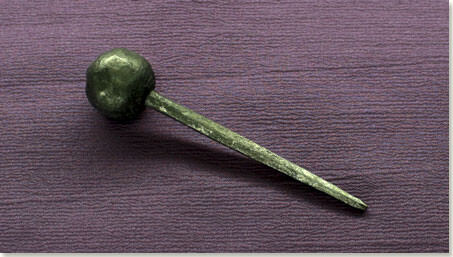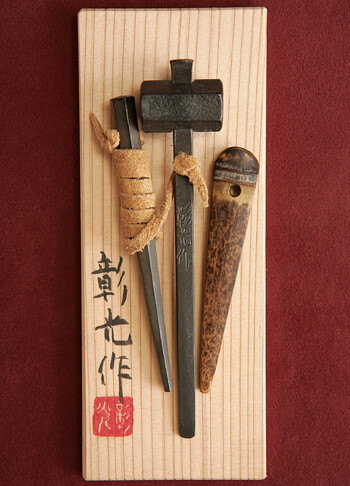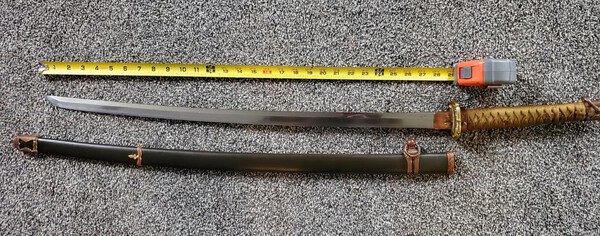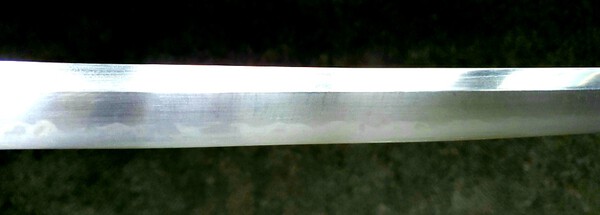Leaderboard
Popular Content
Showing content with the highest reputation on 11/24/2020 in all areas
-
As per usual, krill puts forth a great and insightful opinion, that always makes me rethink what i have posted. Thank goodness for other people's points of view5 points
-
Paul's passing is a tragedy. I will miss him personally as dependable friend and wise advisor. We worked together on a couple of adventures that I recall with fondness. He had a wonderful manner and a common touch but Paul was also a deep and real expert. His collection is amazing and his library without par. A sword visit to Paul involved systematic presentation of pieces arranged and curated to address the topic at hand. Paul responsibly supported sword collecting in ways that will be hard to replace. He was advisor to the JSSUS and was also, of course, President of the NBTHK-AB. He was also the rarest kind of serious collectors. He built an amazing collection of high quality blades, fittings, and armor. And he did so at the highest level. Everything in Paul's collection was just right, fully documented, and appropriately preserved. His contributions to sword appreciation absolutely need documentation. He was also hale and dynamic and the exact image of someone who would last forever. We all assumed that Paul would be there when we would need him. I truly can't understand what American Japanese sword collecting will be like without him. Peter4 points
-
With the help of BangBangSan, a Chinese book can be added to the bibliography. Wang Hui 王・辉. Ri Ben Leng Re 日本冷刃 [Japanese Cold Steel]. Shan Dong Mei Shu Chu Ban She 山东美术出版社, 2016. Chinese language.3 points
-
For sale Tsuba signed Naoaki (直鏡) + kao, full name Hata Naoaki (畑直鏡), who was also a swordsmith and the son of the 1st gen. Shōji Naokatsu (荘司直勝, 1805-1858) and grandson of Taikei Naotane (大慶直胤). All the swordsmiths of the Naokatsu line also produced tsuba, mainly in the Nobuie style, and these tsuba are often characterized by a "melted" surface with a dark smooth patina. This tsuba presents all the classic elements of Naoaki's works, it represents a wheel cart (partally in sukashi) and paulownia crests in vines by engraving. The mimi on left and right sides are engraved with kikko pattern, the typical turtle shell pattern of Nobuie. The patina is dark and smooth and overall the aspect of the tsuba is very "organic" due the melted appearance. Dimensions: 76x72 mm Thickness at seppa dai: 3 mm Thickness at mimi: 5.5 mm Price 850€ plus shipping and Paypal2 points
-
I missed the org post list. The Fimio book total waist of money if your new and looking for books IMHO you'd do well in passing on it.2 points
-
Ware, not fatal, although the second one is in a very bad place.2 points
-
It's a quick and dirty fix to make the blade more attractive to the uninitiated. Very few if any fairs have good enough lighting to properly judge a blade and an acid wash brings up the detail making the blade more saleable. It's also cheaper than having a proper polish.... You would (or would not) be surprised at how many blades on a dealers table have had this done.2 points
-
Would be quite unique if original but I have seen a few Gunto converted into Itomaki Tachi post war. This is far better executed than most so it could very well be original.2 points
-
Malcolm was recently offering some mekugi-nuki for sale; this prompted me to search around the house and do a historical shot. Five are Shinchū. The oldest one is in separate pieces and could well stretch back to the Edo Period. (The two iron ones are probably specifically for matchlocks. They can also act as a key to turn a Bisen breech screw.)1 point
-
Brian, I did not wish to bring this up in Mr. Davidson's thread and appear as insensitive... and I do ask this question with the most honorable of intent. Have you ever considered an "In Memoriam" section?... maybe in the members only area like the Izakaya? It would be a wonderful way to remember/memorialize those who have 'gone before'. Details of what it would look like can be discussed later if you and others think it is a good idea. Mark1 point
-
1 point
-
Should it be limited to members of this messageboard, or expanded to include people who have made a contribution to study in our areas? A local collector in my sword club passed away. He was known as a collector to members of the club only. On the other hand, one of my mentors, a past President of the JSSUS, was a valued member here. I remember both fondly. One made huge contributions here and to the wider sword community, the other did not.1 point
-
Not exactly a history book as it doesn’t read like one, but I would advise getting Papinot's Historical and Geographical history of Japan.1 point
-
1 point
-
1 point
-
As is often the case, John is absolutely spot on. I will miss his watchful presence. In my mind, I thought he would be with us for a few more decades. He took care of himself both physically and mentally. Most sincere regards and condolences for his family.1 point
-
I am indeed saddened by this. Paul was one of those guys you thought would be around holding court forever. Condolences to the family. His shadow will be felt. John1 point
-
I do prefer Kiyomaro to Naotane, but that is a damn, beautiful sword. AAAAAH! To be rich....1 point
-
1 point
-
1 point
-
1 point
-
1 point
-
Terrible news... He did a lot behind the scenes. Great person, he will be missed. God speed Paul.1 point
-
Piers? A tanto is part of a standard bridal trousseau for "Bushi stock", so I don't see why this would be unlikely at all... (in fact, quite commonplace)1 point
-
So many factors come into play, that a quick answer must be difficult. Unlikely, but not completely outside the realms of possibility right after WWII, with many facing extreme poverty. Perhaps the family were of Bushi stock, and had nothing suitable to give, or hid a suitable blade in a funky koshirae, and gave it to her to use on herself if things should not turn out well, or for her eventual funeral, imagining that they might never see her again. (?) PS Looks like it got well used for other things in the meantime.1 point
-
There are several bad acid polish examples in NMB’s archives. The worst off ones make it hard to see the habuchi and turn the hada into some garish “Damascus hada” like pattern. I honestly still have trouble telling some Japanese made victims of FeCl3 from replicas. IDK why a vendor would do that to an antique. And I also wonder if part of the reason some of the replicas made in China and other parts of the world look as odd as they do is because an acid bath is included in their manufacture. Brian and other experienced collectors say that acid etching can be repairable sometimes https://www.militaria.co.za/nmb/topic/17957-my-new-nihonto-with-pics/1 point
-
Johns an Marks both look to have same recessed notch. Made to aid in carry? Love yours Chris.1 point
-
I've seen many old swords that were carried during the WWI and went to museum collections immediately afterwords... Quite a few have condition issues diminishing the value to collectors, sometimes to the point that were such offered for sale without their provenance they would have been rejected loud and clear by every member of the discerning public. Swapped and replaced parts, mismatched serial numbers, brutal and erroneous repair, ersatz modifications to make them look like a newly adopted pattern, or simply choices made by the original owner because that's what he liked. Things seen by collectors as either shady manipulations by unscrupulous dealers or something "that had no valid reason to exist in the first place". Yet this is the actual military life. With Japanese antiques I personally tend to be a bit concerned about the strength of provenance, since its a country where professionals prefer to resolve the disputes by appealing to sensei's judgement rather than to the original period documents, and what is accepted today as such and such might face scrutiny a generation later and suddenly you have nothing to show for it except that based on someone's words it was at one time accepted in this catalogue... But for this object it does not seem to be a strong objection. Would love to own this object at a lesser price, but personally don't see the sum demanded as unreasonable. And I personally really appreciate Tsuruta san offering such items in the open. It is not common. Kirill R.1 point
-
1 point
-
I should be remembered that cast iron can be rendered a little less brittle by an annealing process, to produce malleable cast iron. This was a procedure being carried out in China at least 1000 years ago. But that aside I still maintain that iron cast tsuba are a modern phenomenon.1 point
-
Dear Jeff. Just to summarise what we have so far......... You have a nice sword, the length makes it a ko wakizashi or short wakiszashi. Swords between 12" and 24" are wakizashi. The sword is unsigned, (mu mei), but the yasurime, (file marks used by the smith to finish the tang), are clear. Generally, (and you will soon realise that nothing is absolute in this game), clear file marks suggest that the sword is slightly younger, in this case Shinto, (1600 - 1800) or Shinshinto, (1800 - 1860). Those dates are approximate. Given all your photogr[hs which make some things clearere than at the start, my suggestion would be that this is a Shinshinto sword. The koshirae, (mounting), is quite plain but attractive and generally complete, go very easy on the cleaning of the tsuba until you have taken up Ken's suggestion and met up with Gray who will be able to offer you good advice. Whatever the verdict you have a nice example of a genuine Japanese sword in full mounts, it is a nice thing and the family association with your Grandfather makes it special. Enjoy the journey as you learn more. All the best.1 point
-
A good article on the subject here..... http://www.ksky.ne.jp/~sumie99/acid polishing.html1 point
-
1 point
-
1 point
-
1 point
-
There is sometimes a tendency (with advancing years), to develop "old man's syndrome", where frustration or even anger over takes rationality. In my day ice cream was nicer, tomatoes tasted like tomatoes should, and young drivers are hopeless. Sorry but it's a fact, the young of today look for, and are used to instant gratification. Why read research and study when you can ask for and expect an answer. Get used to it! We are lucky the NMB draws a crowd, at least that shows some initiative that a bit of online research is taking place. Many start as uninformed newbies, but the good ones stay, learn and develop. Just suck it up, and read and reply to those topics that interest you, and skip the ones that don't. If it helps stop some kid buying a Chinese fake, or helping with Grandads' war souvenir, job done! The place for non-nihonto topics is Izakaya, you don't have to read it.1 point
-
I'm deeply saddened to hear this. Arnold and I spoke often, and it is not long ago that he generously mailed a number of needed, reference scans to my home. It was always a pleasure to correspond with him and he was ever generous with his time and knowledge. I send my sincerest condolences to his family. Kind regards, Ray1 point
-
1 point
-
Hello George This is the first time i read the post. It seems that s a very interesting task for long winter nights. So i will keep my eyes open to collect informations to help you. Best Chris1 point
-
Jacques, We can always discuss the topic over the distinction between Mokume/Itame and the distinction made by Japanese Experts (herebelow some counter examples) and we have already done it in another topic. Herebelow some counter examples: A well documented link ( Dr Stein): http://home.earthlink.net/%7Esteinrl/mino.htm Fred Weissberg :http://www.nihonto.com/abtmaj.html Malcom E Cox : Mino-To p13 : Hada :.... and the folding patterns produce a grain (jihada) that is basically Mokume Nakayama Kokan (the Connoissseurs of Japanese swords) : p88 : Mokume hada : ....In blades of Mino Province, Mokume is combined with Masame Attribution based on Jihada p88 : Chu Mokume combined with Masame : Koto : Naoe Shizu, Kanemoto II, Izumi no Kami Kanesada, Sue Seki p.89 Mokume combined with Masame Leading swordsmiths : Koto : Sue-Seki p.215, 216 : Mino tradition Early Mino : Jihada : O-mokume hada combined with some masame Hada Middle Period : : Mokume-hada combined with masame-hada Sue-Seki : ... the Ji is coarse Mokume-hada - Zenjo school : Ko-Mokume hada - Kanemoto school : O-Hada - Kanesada school : mokume-hada mixed with Masame-hada - Hachiya Kanesada school : mokume-hada mixed with Masame-hada - Kanefusa school : coarse mokume-hada mixed with Masame-hada - Akasaka Senjuin : ko-mokume hada But the topic was : is Mokume as good for cutting purpose as itame? The link to Jinsso Kim's website answers the question1 point
-
Jeremy, was it a Cooking class???? Bull ...(s**t!! I cannot find the end of this word.. ). In Koto : Mino swords which were reknowned for their cutiing ability have a mokume hada Bizen swords are Mokume Among these schools you will find an amazing number of Wazamono, Ryo wazamono ... Have a look at this link and search in the "swordsmith ranking/wazamono ranking" http://www.jp-sword.com/1 point

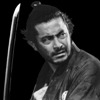


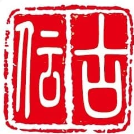







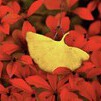


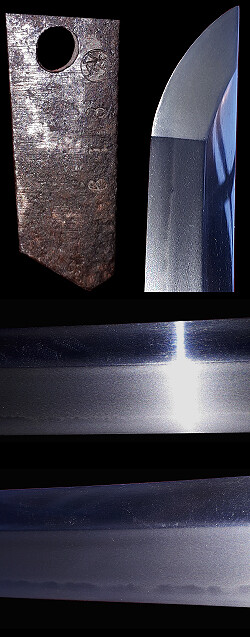
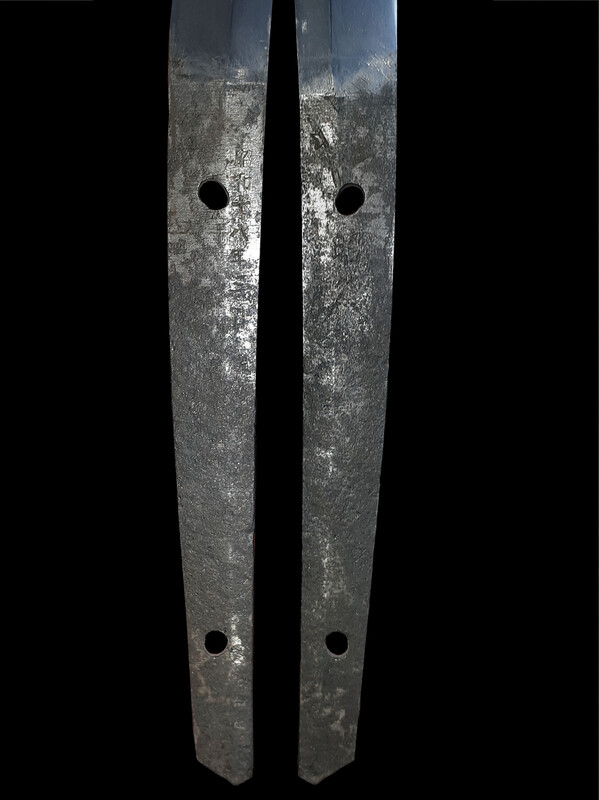



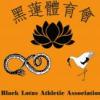

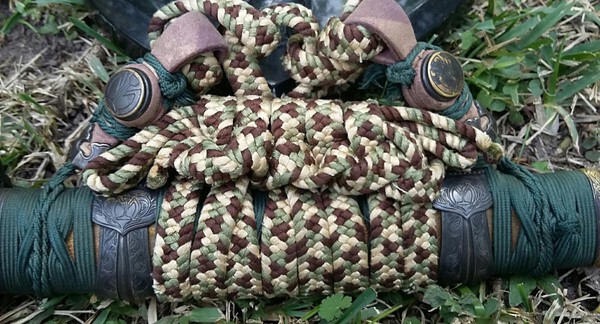






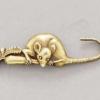

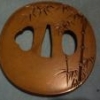

.jpg.b1e1fa96d9a0ca5e6d838aca46f85ddd.jpg)


